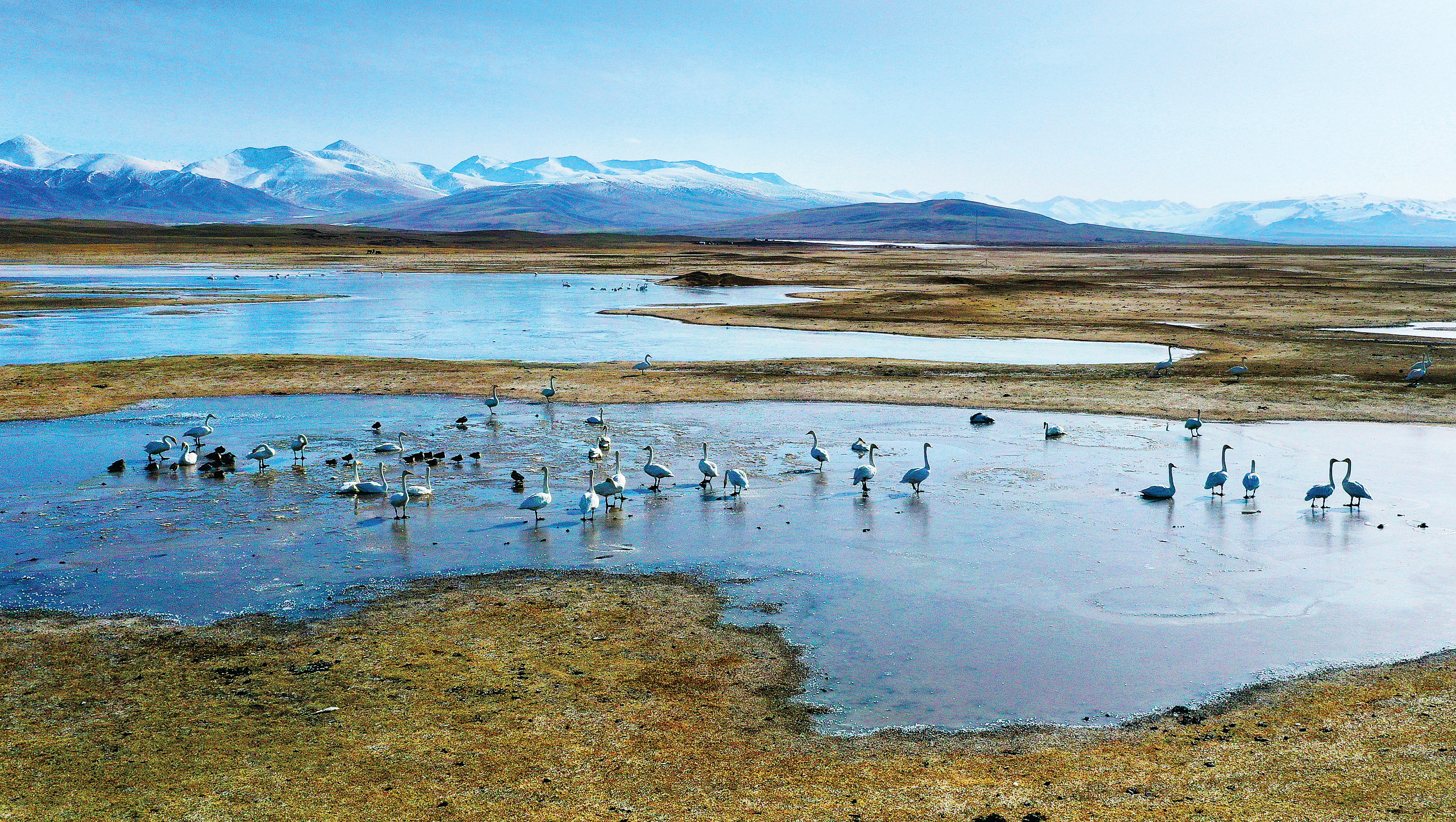Land of the rising swan
THE ARTICLES ON THESE PAGES ARE PRODUCED BY CHINA DAILY, WHICH TAKES SOLE RESPONSIBILITY FOR THE CONTENTS

Like an exquisite emerald ringed with diamonds, the verdant Bayanbulak Grassland lies in the midst of the snow-capped Tianshan Mountains. A river meanders through this vast pastoral paradise, branching into many tributaries and giving it a name that means “abundant spring water”.
The virgin lowland in the Xinjiang Uygur autonomous region is as close to a utopia as one can get and is now China’s only nature reserve for swans. Between mid-March and April every year these graceful waterfowl flock to the Bayanbulak National Nature Reserve for nesting. By the end of September they take their young and leave for warmer climes.
Ma Ming, an ornithologist and former director of the Bayanbulak ecological station, first arrived in the grassland during the early 1980s.
“I have seen these elegant birds migrate for nesting umpteen times and yet I can never have enough of it,” he says. “Our bond only continues to grow.”
The reserve sits at an altitude of 8,200 feet and covers about 530 square miles. The river is mostly fed by the melting snow.
“This is one of the coldest areas in China, with a yearly average temperature of -4.7 C,” he says. “In January the temperature can fall to as low as -48 C. July, on the other hand, is the warmest month, at 28 C, which is ideal for nesting.”
Research shows that China is inhabited by three species of swans – the mute swan (Cygnus olor), the tundra swan (Cygnus columbianus) and the whooper swan (Cygnus cygnus). While the first two species almost always spend only the winter in China, Bayanbulak is the nesting site for the whooper swan.
“The Kaidu River twists and turns through the reserve, creating wetlands to draw the winged visitors,” Ma says. “Swans cannot fly during their annual moulting period – losing feathers, which later grow back – and living in the water or marshland protects them from predators such as wolves and foxes.”
Also, the wetlands are an abundant source of food. “The diet of swans chiefly comprises weed and plankton, which are found in plenty at Bayanbulak. They spend half a year at the reserve, feeding and nesting. It allows them to recharge themselves for the next round of migration,” says Ma.
The reserve’s administrative bureau has set up a central management station with wardens of the reserve, who work to protect the swans. The station has six full-time custodians and recruits six more to help during the busy season, which is from March to October.
Na Qing has been a full-time warden since 2016. He visits the wetlands three to five times a week, observes and records swan behaviour, prevents interference of any kind and keeps tabs on other wildlife species.
Since the nesting area is a marshland with interconnected lakes, solo-tripping can be perilous even for those familiar with the topography. So the wardens work in teams of usually two or three. “Crossing the wetlands can be tricky,” Na says. “The water is deep in some pockets, and soft mud can trap you in other places. We tie a safety rope around the waist.”
Between 8,000 and 10,000 swans visit the reserve every year, he says, and 2,500 to 3,000 cygnets are born on an average. As winter sets in, fewer than 300 stay back; mostly those that lack the strength to fly long distances. The team keeps an eye on these swans to ensure they do not go hungry. Corn seeds are scattered every seven to 10 days.
Following decades of individual and organisational effort, Bayanbulak was made a national reserve in 1986. In 2013 Xinjiang Tianshan was included in the UNESCO World Heritage List, and Bayanbulak (named as Bayinbuluke) is one of its four segments.
Subscribe to Independent Premium to bookmark this article
Want to bookmark your favourite articles and stories to read or reference later? Start your Independent Premium subscription today.